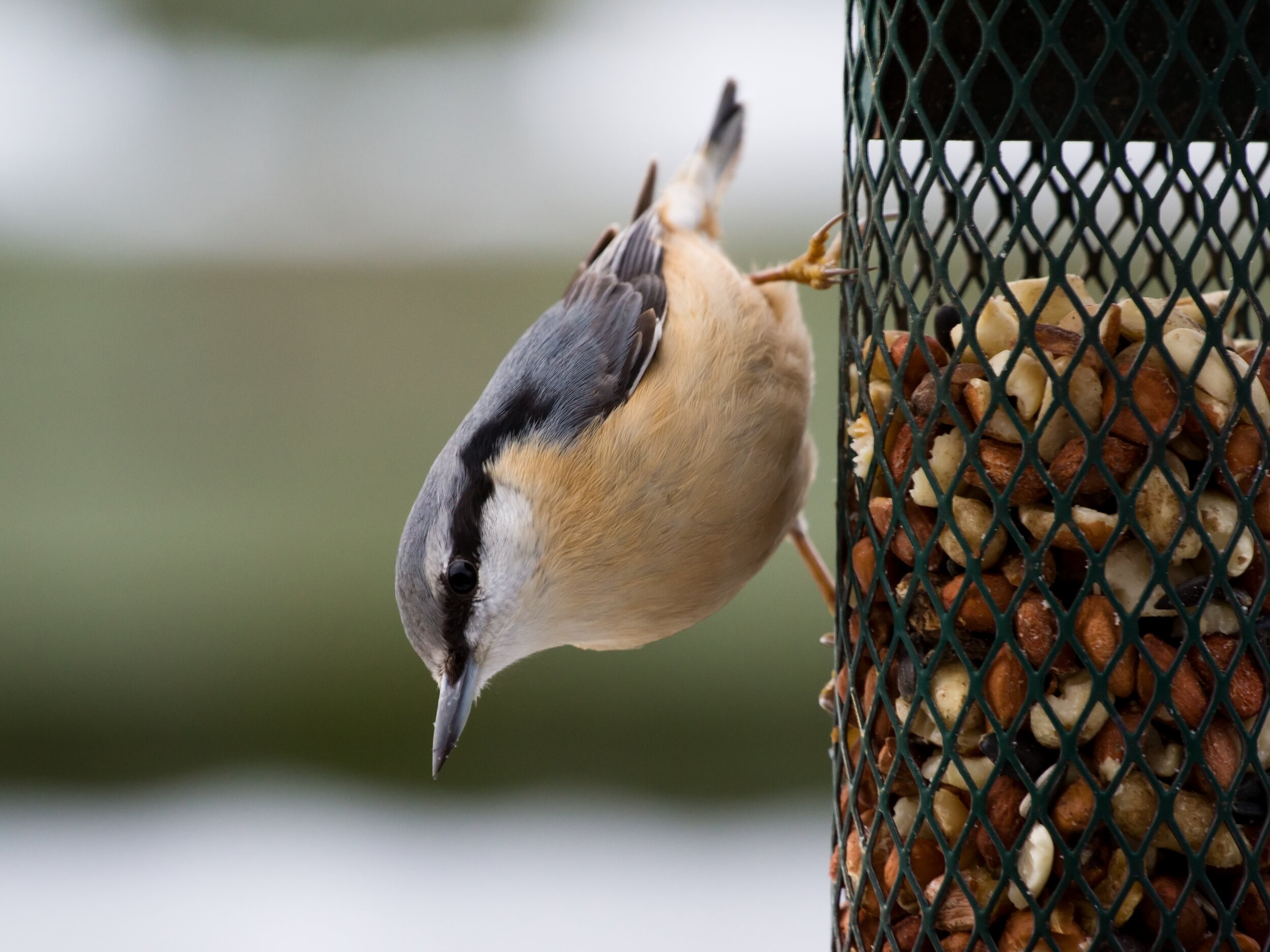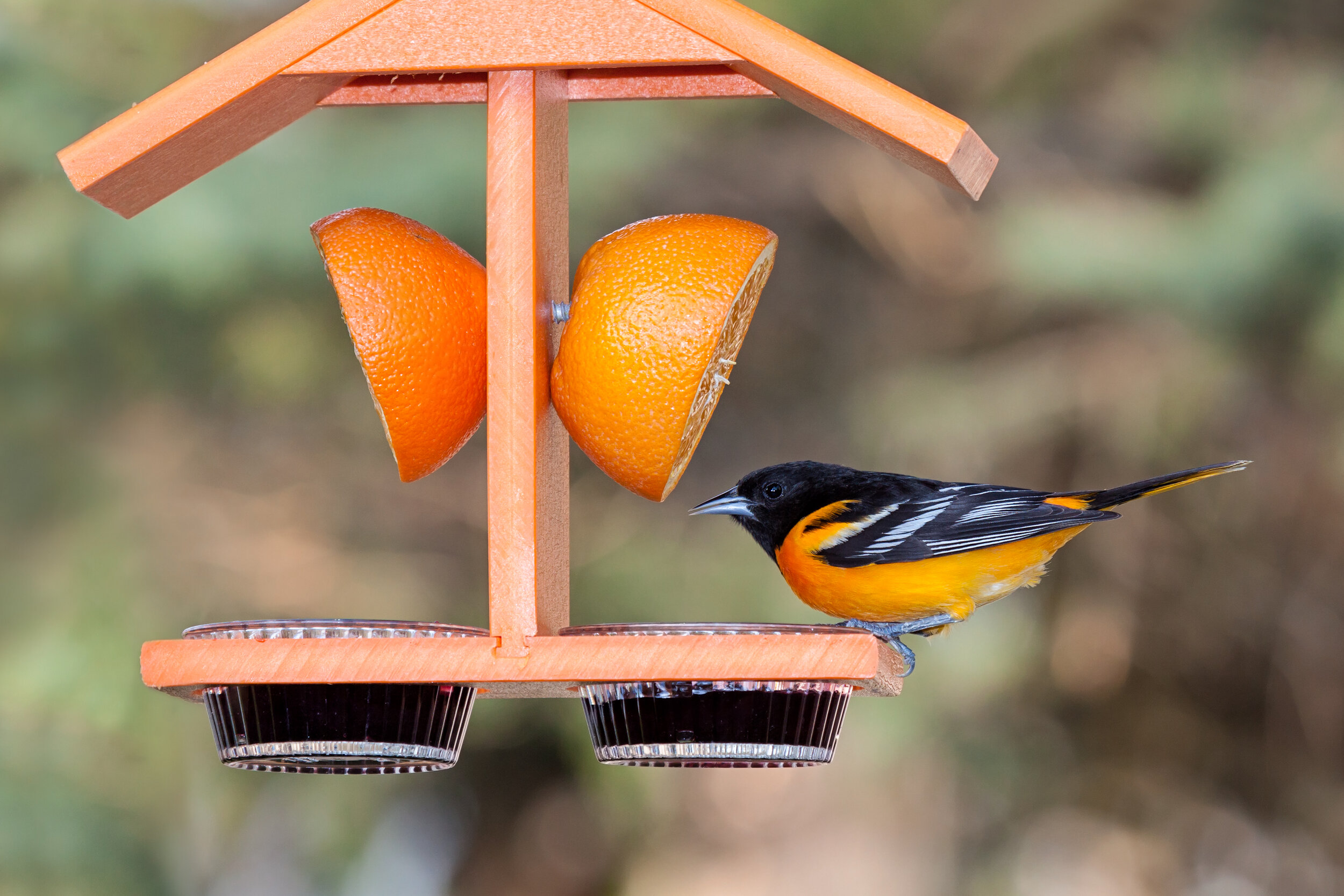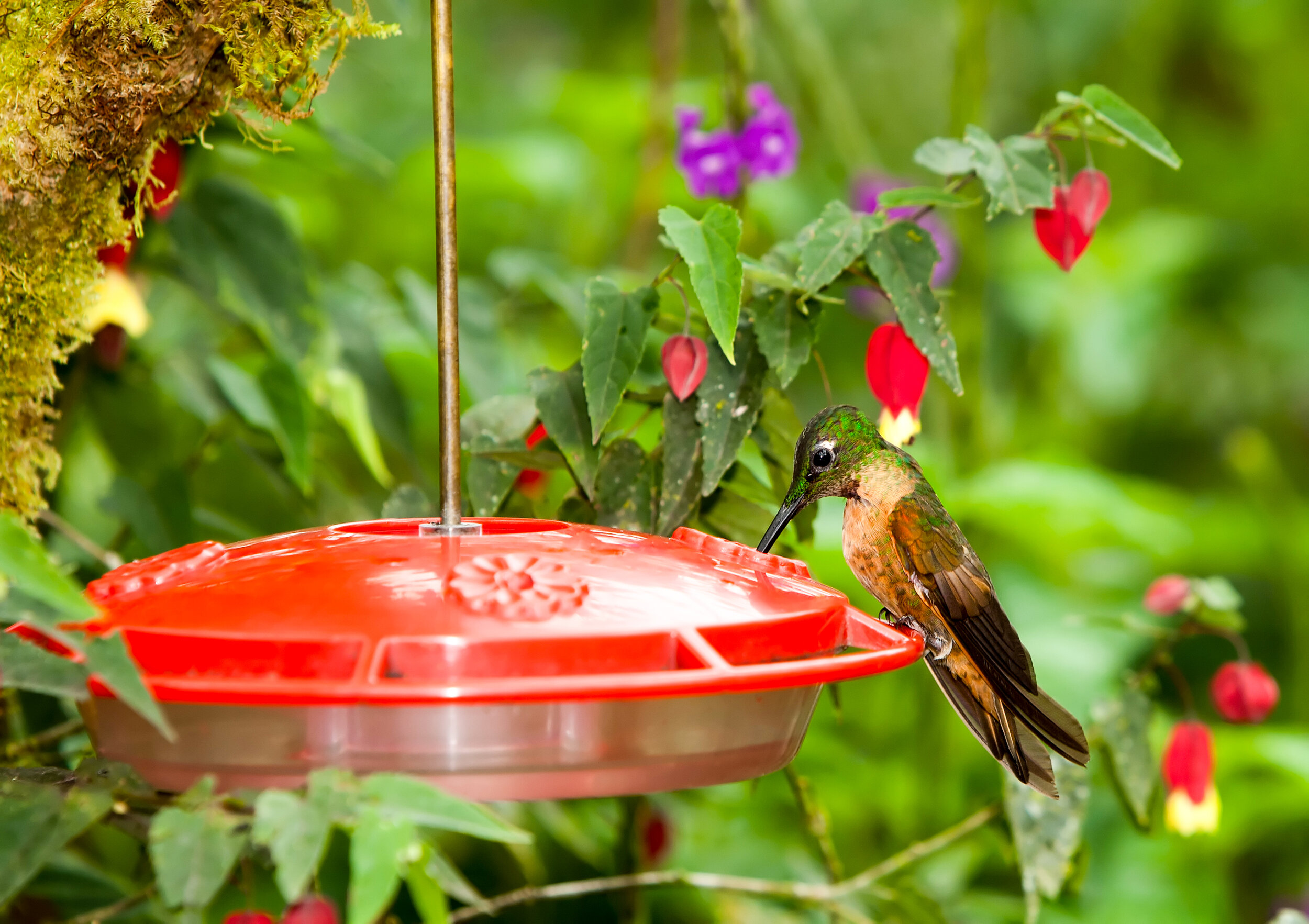Maybe you don’t have the time or means to go to where the birds are. You can identify plenty of birds where you are. Having them so close to you will provide you the opportunity to learn how to use your field guide and binoculars on a more frequent basis. This will prove beneficial in the future when you are going to different locations to find those birds that don’t come to you.
What is it that birds need - Food, Water, Shelter
Birds are like any other animal. They require the basics to survive everyday. Depending on the season, these may determine whether the bird lives to the next day. A few years ago, there was a gull that was well out of its normal territory. It was late fall and I wanted to go see this bird, but had to wait until the weekend when I would have time. The evening before, the temperatures dropped to freezing. I ventured out with a neighbor who was also a birdwatcher. We arrived at the location where the bird had been seen for the last week. The bird was not there and it was determined that the bird had not survived the night. It had not been able to obtain food that is was used to in this new area and was not able to find shelter from the cold. If you choose to provide these 3 three requirements, you will be helping birds with their daily needs and they will provide you joy, curiosity, and learning.
Food
People usually think that you buy the birdseed from your local store and all the birds will come to eat it. Now, while that may prove to be true, there’s more to the story than that. All birds were not created equal, each has their own little niche to live in, with different needs, including food. There are birds who eat exclusively from the ground, others forage in the trees, while others will look for insects inside trees. How can you help the greatest number of birds, and for you, the greatest variety of birds, so that you can learn to identify new species that you have not seen before? With respect to food, you need to offer a variety of seed and for those special birds, you may need to buy special feeders.
This nuthatch is enjoying a meal of nuts
Let’s start with the normal bird seed you can buy at any store. It usually is a mix of cracked corn, sunflower seed, millet, milo and maybe, just maybe, peanuts. From many years of personal experience feeding birds, I can tell you that most birds will just scatter most of the seed to the ground to get at the good stuff. You can buy these relatively cheap mixes, but I can guarantee you that you’ll be happy to see different types of plants growing under your feeder once they sprout. If you want to be smarter about this, you need to buy specific seed types for specific types of birds. This may end of costing a little more, but all the seed will be eaten.
House finches eating mixed seed from a traditional hanging feeder.
So what should you feed birds so they come to you - sunflower seed, peanut hearts, nyjer (thistle) seed, and cracked corn are the basics I have used. Different species will go for different seed, but these four types will bring in a wide variety of birds to identify. There are some specific feeders you may need - hummingbird feeders and oriole feeders - if you are looking to attract those species. There are many types of feeders to use, and I have recommended some below.
A specialized oriole feeder with places for fruit and a jelly tray.
Hummingbirds enjoy flowers and their own feeders, too.
Water
You would assume that since birds live in the wild that they can find water by themselves. That is true, but if certain seasons water is harder to come by. In summer, water can evaporate from smaller sources, while in winter water can freeze and not be accessible. Providing water in your yard is a fantastic way to bring birds in during these two seasons along with during migration. Please make sure that you clean out the water container frequently to make sure it is healthy for the birds. There are simple solutions and more complex solutions. One way I provided water back in the day was to invert the lid of a metal garbage can, buttress of the bottom of it so it was level and fill with water. Very simple, very cheap, very effective. The next step would be a birdbath, as you have typically seen. The most complex would be to install a small reservoir with pumps (like a koi environment). I have never done that myself; I know they can attract a huge variety of birds because of the running water and larger source of water.
A smaller artificial pond, this will attract many birds to your yard.
A bird bath along with selected plantings will attract hummingbirds and butterflies alike.
Shelter
Shelter in this instance can take two forms - housing and protection. For the housing aspect, you can provide birdhouses for species to inhabit. Each species will need a specific size hole to prevent other species from invading and disrupt nesting. I have provided links for books that can assist with this aspect. The other form of shelter would be for protection from predators. This can be done by piling twigs and branches in an area of your yard. It can also be done by having shrubs planted in your yard. When a hawk flies through your yard (and they will!), those shrubs and brush piles will provide a quick sanctuary for the birds that were feeding there. Inevitably, the hawks will take a smaller bird, but that is the circle of life and it also makes for exciting tales to tell.
Birdhouses can be constructed easily from scrap wood.
A small brush pile will provide much needed protection for smaller birds.
Next Steps
Your home birdwatching experience can only improve by providing more of these basic needs to birds. A little creativity can make these changes very inexpensive by recycling containers that you may have around the house. You can also opt to order the finest in birdfeeders, houses and artificial ponds. No matter your course of action, any or all of these changes will undoubtedly bring more birds to your yard and give you the challenge of having more birds to identify. Enjoy!
The Book is Here!!
Learn how to attract the 50 most common backyard birds to YOUR backyard sanctuary.









